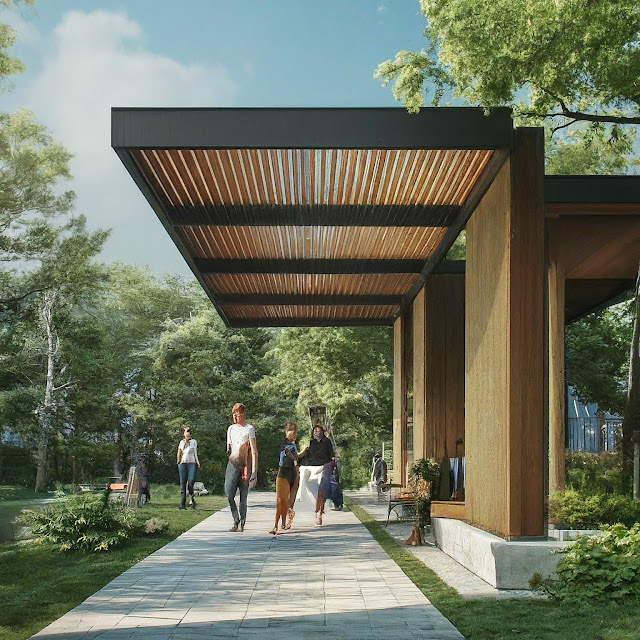--------
Embracing Clean Energy: Revolutionizing Heating and Cooling Systems in Architecture
In the pursuit of sustainable living and environmental stewardship, the architecture and construction industry is undergoing a transformative shift towards clean energy heating and cooling systems. Traditionally, buildings have relied heavily on fossil fuel-based heating and cooling systems, contributing to greenhouse gas emissions and environmental degradation. However, with advancements in technology and growing awareness of climate change, architects and builders are embracing clean energy solutions to reduce carbon emissions, improve energy efficiency, and create healthier indoor environments. In this article, we explore the evolution of clean energy heating and cooling systems in architecture and their role in shaping a more sustainable built environment.
The Need for Sustainable Heating and Cooling Solutions:
Heating and cooling systems are essential components of building design, ensuring occupant comfort and well-being throughout the year. However, conventional heating and cooling systems, such as fossil fuel-based boilers and air conditioning units, are major contributors to carbon emissions and environmental pollution. As concerns about climate change and air quality continue to escalate, there is an urgent need to transition towards cleaner, more sustainable alternatives that reduce reliance on fossil fuels and minimize environmental impact.
Advancements in Clean Energy Technologies:
Clean energy heating and cooling systems encompass a diverse range of technologies that harness renewable energy sources such as solar, geothermal, and biomass to provide heating, cooling, and ventilation for buildings. These technologies offer numerous benefits, including:
1. Solar Heating Systems: Solar heating systems use solar collectors to capture sunlight and convert it into heat energy, which can be used to provide space heating and hot water for buildings. Solar heating systems can significantly reduce reliance on fossil fuels and lower energy costs, particularly in regions with ample sunlight.
2. Geothermal Heat Pumps: Geothermal heat pumps utilize the stable temperature of the earth's subsurface to provide heating, cooling, and hot water for buildings. By extracting heat from the ground during the winter and transferring heat back into the ground during the summer, geothermal heat pumps offer highly efficient and environmentally friendly heating and cooling solutions.
3. Biomass Heating Systems: Biomass heating systems use organic materials such as wood pellets, agricultural residues, and organic waste to generate heat energy for buildings. Biomass heating systems can be used for space heating, water heating, and even power generation, offering a renewable and carbon-neutral alternative to fossil fuels.
4. Heat Recovery Ventilation (HRV) Systems: Heat recovery ventilation systems capture and transfer heat energy from outgoing air to incoming fresh air, improving indoor air quality and reducing energy consumption for heating and cooling. HRV systems are highly efficient and can significantly reduce heating and cooling loads in buildings.
Integration into Architectural Design:
Clean energy heating and cooling systems are increasingly being integrated into architectural design to maximize energy efficiency and sustainability. Architects are incorporating passive design strategies such as building orientation, thermal mass, and natural ventilation to reduce heating and cooling loads and optimize the performance of clean energy systems. Additionally, architects are designing buildings with energy-efficient building envelopes, high-performance insulation, and advanced glazing systems to minimize heat loss and improve thermal comfort.
Benefits of Clean Energy Heating and Cooling Systems:
The adoption of clean energy heating and cooling systems offers numerous benefits for both building owners and the environment:
1. Reduced Carbon Emissions: Clean energy heating and cooling systems significantly reduce carbon emissions and environmental pollution compared to fossil fuel-based systems, helping mitigate climate change and improve air quality.
2. Energy Efficiency: Clean energy systems are highly efficient, reducing energy consumption and lowering operating costs for building owners over the long term.
3. Renewable Energy: Clean energy systems rely on renewable energy sources such as solar, geothermal, and biomass, reducing reliance on finite fossil fuels and promoting energy independence.
4. Improved Indoor Air Quality: Clean energy systems, particularly heat recovery ventilation systems, improve indoor air quality by providing continuous fresh air circulation and reducing pollutants and allergens.
5. Long-Term Sustainability: Clean energy systems contribute to the long-term sustainability of buildings by reducing environmental impact, improving energy efficiency, and promoting a healthier indoor environment for occupants.
Conclusion:
Clean energy heating and cooling systems represent a significant advancement in sustainable architecture, offering efficient, renewable, and environmentally friendly alternatives to conventional fossil fuel-based systems. By embracing clean energy technologies and integrating them into architectural design, architects and builders can create buildings that are not only energy-efficient and cost-effective but also contribute to a more sustainable and resilient built environment. As the architecture and construction industry continues to evolve, the widespread adoption of clean energy heating and cooling systems will play a crucial role in mitigating climate change and shaping a more sustainable future for generations to come.
------------
Below are some of my sketches and basic renders.
Each month, I spend a lot of time in order to keep the blog going , design and publish new material and sketches. For 4 years I published sketches for free creating the biggest collection of this kind of architectural sketches on the web. It has remained free and ad-free and alive thanks to support from viewers. I have no staff, I keep alone myself this blog. If this blog have made your own life easier or help your creativity, maybe giving you new ideas, please consider aiding its sustenance with a donation. Your support makes all the difference.
All the sketches and art on this blog and Pinterest are for sale, and can be used after agreement with me.
Thank you,
Bozelos Panagiotis - Civil engineer - Architect
LINKEDIN PROFILE: https://www.linkedin.com/in/panagiotis-bozelos-96b896240
RESUME : https://drive.google.com/file/d/1mKd0tFYFREnN1mbsT0t42uOavFln4UOo/view?usp=sharing
BLOG: www.architectsketch.blogspot.com
PINTEREST (sketches): https://gr.pinterest.com/bozelos/sketches-and-plans/
PINTEREST ART: https://gr.pinterest.com/bozelos/bozelos-panagiotis-art/
Don't hessitate to communicate with me for anything you want.
Contact info:
bozpan13@gmail.com
bozpan@protonmail.com
TEL: 00306945176396
DONATE ME : Donate to Panagiotis Bozelos
Buy art: GalleryBlend - Buy printed Art
---------------------------

_1.jpg)
_2.jpg)
_1.jpg)
_2.jpg)
_1.jpg)
_2.jpg)
_1.jpg)
_2.jpg)
_1.jpg)
_2.jpg)
_1.jpg)
_2.jpg)
_1.jpg)
_2.jpg)















_0.jpg)
_1.jpg)
_0.jpg)
_1.jpg)
_0.jpg)
_1.jpg)
_0.jpg)
_1.jpg)
_0.jpg)
_1.jpg)

















